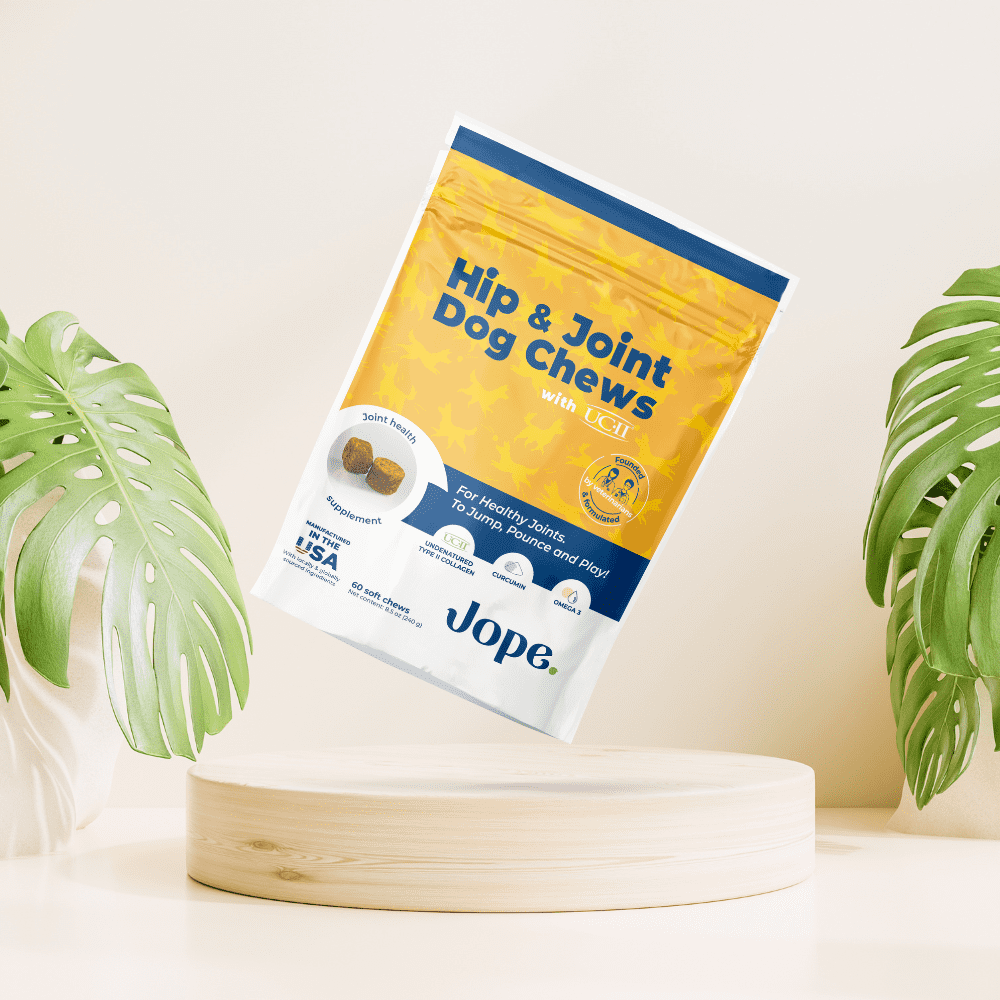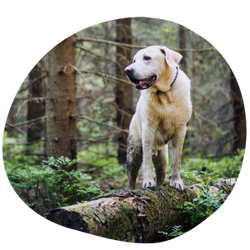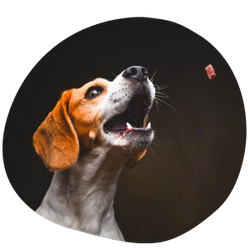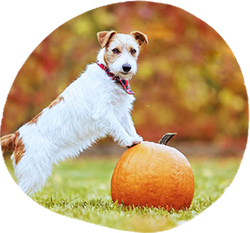No Products in the Cart
Bullmastiff Dog Breed: The Complete Guide for Pet Parents

Hi, Jope's squad!
Meet the Bullmastiff, a breed renowned for its impressive size, unwavering loyalty, and protective instincts. Originally bred in the 19th century as a gamekeeper's night dog, the Bullmastiff has a rich history of guarding estates and protecting property.
This powerful and formidable guard dog combines the strength of the Bulldog with the agility of the Mastiff, resulting in a breed that is both a loyal companion and a vigilant protector. Recognized by the American Kennel Club, Bullmastiffs stand out with their fawn, red, or brindle coats and minimal grooming needs.
History of Bullmastiff
The Bullmastiff, originally bred in late 19th-century England, was developed as the "Gamekeeper's Night Dog" to protect estates from poachers. This breed resulted from crossing the English Mastiff with the Bulldog, combining the Mastiff's strength with the Bulldog's tenacity.
Recognized by the British Kennel Club in 1924 and the American Kennel Club in 1933, Bullmastiffs transitioned from estate guardians to cherished family companions. Their historical role as silent protectors is reflected in their calm yet vigilant temperament, making them reliable and loyal pets today.
Physical Characteristics of Bullmastiff

Size and Weight
Bullmastiffs are large, powerful dogs known for their substantial size.
-
Males:
- Height: 25 to 27 inches at the withers
- Weight: 110 to 130 pounds
-
Females:
- Height: 24 to 26 inches at the withers
- Weight: 100 to 120 pounds
These dimensions make Bullmastiffs one of the larger dog breeds, and often appear in the top 10 larger dog breed in the word at position number 1. They are known for their impressive and formidable presence.
Coat Color and Texture
Bullmastiffs have a short, dense coat that is easy to maintain.
-
Common Colors:
- Fawn
- Red
- Brindle
The coat often features dark markings on the head, particularly around the muzzle and eyes. The coat’s flat texture requires minimal grooming, making it ideal for pet owners who prefer low-maintenance dogs.
Distinctive Physical Features
Bullmastiffs are recognized by several distinctive physical features that contribute to their strong and impressive appearance.
-
Head:
- Broad and wrinkled with a short, square muzzle
- V-shaped ears hanging close to the cheeks
- Dark hazel eyes
-
Body:
- Muscular and square-shaped
- High-set tail reaching to the hocks
- Black nose
-
Other Features:
- Droopy eyes
- Floppy ears
Temperament of Bullmastiff
General Behavior Traits
Bullmastiffs are known for their calm, loyal, and protective nature. They are generally quiet and composed, making them excellent companions for families. Despite their commanding appearance, they are gentle and affectionate with their loved ones. This breed is often described as having a "gentle giant" character, especially around family members and children.
Interaction with Family Members
Bullmastiffs form strong bonds with their family members. They are extremely loyal and thrive on human companionship. These dogs often enjoy being close to their family, sometimes even acting as "lap dogs" despite their large size. Their protective instincts are strong, which means they are always vigilant and ready to defend their home and loved ones.
Socialization with Other Pets and Strangers
Early socialization is crucial for Bullmastiffs. Introducing them to a variety of people, animals, and environments from a young age helps them develop into well-rounded adults. This socialization helps mitigate their natural wariness with strangers and reduces the risk of aggressive behavior toward other pets. It’s important to supervise interactions with smaller pets and to teach Bullmastiffs how to behave appropriately in various situations.
For those with multiple pets, it's advisable to introduce Bullmastiffs to other animals early on and maintain consistent, positive reinforcement training. This breed can be dominant, especially with dogs of the same sex, so careful management is necessary to ensure harmonious relationships.
Common Temperament Issues and Solutions
Bullmastiffs can exhibit several behavioral challenges, here are some common issues and solutions:
- Stubbornness: Bullmastiffs are intelligent but can be headstrong. Consistent, firm training from an early age is essential. Positive reinforcement works best to keep them engaged and willing to follow commands.
- Aggression Towards Other Animals: Early socialization and supervised interactions are key to preventing aggressive behavior. Training classes can also help in managing their interactions with other dogs and pets.
- Protectiveness: Their natural guarding instinct means they can be wary of strangers. Socialization and training to distinguish between normal and threatening behaviors are crucial. Teaching Bullmastiffs to be polite and well-mannered with guests is important to prevent unwarranted aggression.
Bullmastiffs, like other large breeds such as German Shepherds, Labradors, Chow Chows, and Great Danes, benefit greatly from positive reinforcement training. This approach helps ensure they grow into well-behaved, balanced adults, capable of distinguishing between friendly and threatening situations.
By understanding and addressing these temperament traits, Bullmastiff owners can ensure their dogs grow up to be well-behaved, loyal companions.
Also Read - English Springer Spaniel
Health and Lifespan of Bullmastiff
Common Health Issues in Bullmastiffs
Bullmastiffs face a range of health challenges that can significantly affect their well-being. Among these, hip dysplasia is notably prevalent, with a study published in PLoS One revealing a 24.0% incidence rate in the breed, highlighting a considerable risk for potential owners to consider.
- Hip Dysplasia: A genetic disorder where the hip joint fails to align correctly, resulting in arthritis and pain. Common symptoms are limping, difficulty standing up, and a bunny-hopping motion.
- Elbow Dysplasia: Like hip dysplasia, this condition impacts the elbow joints, causing considerable pain and mobility problems. According to the study published in PLoS One, the prevalence of elbow dysplasia in Bullmastiffs is 14.2%.
- Gastric Torsion (Bloat): A critical condition where the stomach twists, trapping gas and fluids. Without prompt veterinary treatment, this can quickly become fatal.
- Heart Conditions: Bullmastiffs can suffer from heart problems such as dilated cardiomyopathy, which can lead to heart failure.
- Cancer: They are prone to various cancers, including mast cell tumors and lymphoma.
- Skin and Eye Issues: Conditions like entropion (eyelid rolling inward) and atopic dermatitis (skin allergies) are common and can cause discomfort if untreated.


Joint Health Issues

Joint health is a significant concern for Bullmastiffs due to their large size and active nature. Hip and elbow dysplasia are prevalent, often leading to arthritis and chronic pain. Early detection through X-rays and veterinary evaluations is crucial. Management strategies include:
- Weight Control: Maintaining a healthy weight to reduce stress on the joints.
- Joint Supplements: Incorporating supplements like UC-II® collagen, omega-3 fatty acids, and curcumin into their diet can significantly help maintain joint health and reduce inflammation.
- UC-II® Collagen: Helps protect joint cartilage and improve mobility. Studies have shown it to be more effective than traditional glucosamine and chondroitin.
- Omega-3 Fatty Acids: Renowned for their anti-inflammatory effects, these nutrients aid in reducing joint pain and enhancing overall joint function.
- Curcumin: A powerful antioxidant that reduces inflammation and supports long-term joint health.


Average Lifespan
The typical lifespan of a Bullmastiff is around 7 to 10 years, though some may live longer with proper care.
Factors influencing their lifespan include genetics, diet, exercise, and regular veterinary check-ups. Ensuring a balanced diet, maintaining a healthy weight, and regular medical care can help maximize their longevity.
Understanding and addressing these health concerns can help Bullmastiff owners ensure their pets lead healthy, happy lives.
Also Read - Can Dogs Eat Zucchini
Care Tips for Bullmastiff
Dietary Needs and Recommendations
Bullmastiffs require a balanced diet tailored to their large size and specific health needs. Here are some key dietary recommendations:
- High-Quality Protein: Ensure the primary ingredient is meat. Avoid fillers like corn and soy, as these can contribute to weight gain and are less nutritious.
- Healthy Fats: Include sources of omega-3 fatty acids to support joint health and reduce inflammation.
- Joint Supplements: Incorporate supplements like UC-II® collagen, omega-3 fatty acids, and curcumin into their diet. These ingredients help maintain joint health and reduce pain and inflammation, which is crucial for large breeds prone to joint issues.
Feeding Bullmastiffs in smaller, more frequent meals (two to three a day) can help prevent bloat, a common issue in large breeds. Always consult your veterinarian to tailor the diet to your Bullmastiff's needs.
Exercise Requirements
Bullmastiffs need moderate exercise to stay healthy and maintain a proper weight. Over-exercising, especially in young dogs, can harm their developing joints.
- Daily Walks: Engage in regular, moderate-paced walks.
- Playtime: Activities like fetch or gentle tug-of-war can provide both physical and mental stimulation.
- Avoid High-Impact Exercises: These can strain their joints. Focus on low-impact activities, especially for puppies and young dogs.
Grooming and Maintenance
Bullmastiffs have short, dense coats that require regular but minimal grooming.
- Brushing: Brush their coat weekly to remove loose hair and dirt.
- Bathing: Bathe them as needed, typically once a month, to keep their skin and coat clean. Use a hydrating spray after bathing to maintain skin moisture.
- Ear Cleaning: Clean their ears weekly to prevent infections.
- Nail Trimming: Trim their nails regularly to avoid overgrowth and discomfort.
Training and Obedience Tips
Effective training and socialization are crucial for Bullmastiffs to grow into well-behaved, confident adults.
- Early Socialization: Introduce them to various environments, people, and other animals from a young age to ensure they are well-adjusted.
- Positive Reinforcement: Use treats, praise, and playtime to reward good behavior. Avoid harsh corrections, as Bullmastiffs respond best to gentle, consistent training methods.
- Consistency: Be consistent with commands and routines to help them understand expectations.
- Puppy Classes: Enroll them in puppy classes to build foundational skills and promote socialization. This also helps in managing their protective instincts properly.
Bullmastiffs benefit greatly from a balanced diet and regular exercise. Incorporating high-quality joint supplements can help maintain their mobility and overall health, ensuring they lead long, active lives.
Living Conditions for Bullmastiff
Bullmastiffs thrive in homes with ample space and a calm environment. They require a fenced yard to move around freely and safely. While adaptable to smaller spaces like apartments, they need regular exercise to stay physically and mentally stimulated.
Adaptability to Various Living Situations
- Apartments: Bullmastiffs can live in apartments with sufficient daily exercise. They require regular walks and playtime to prevent boredom and maintain health.
- Houses with Yards: This is the ideal living situation, providing space to move freely and perform their natural guardian role.
- Climate Considerations: Bullmastiffs prefer moderate temperatures and can overheat easily in hot and humid weather. They require plenty of water and shade.
- Indoor-Outdoor Living: Integrating indoor and outdoor spaces enhances their living environment, providing more space to explore and enjoy.
Overall, Bullmastiffs benefit from a home with both indoor comfort and outdoor space. Regular exercise, a stable routine, and a loving environment keep them happy and healthy.
Bullmastiffs and Families
Suitability for Families with Children
Bullmastiffs are known for their gentle and affectionate nature, making them suitable for families with children when properly trained and socialized. They are protective and form strong bonds with family members. However, due to their large size, they can unintentionally knock over small children, so supervision is important. It's often recommended to introduce Bullmastiffs to families with older children who can interact more appropriately with these large dogs.
Role as a Guard Dog
Bullmastiffs excel as guard dogs due to their protective instincts, strength, and loyal nature. They were originally bred to guard estates, which has ingrained a natural vigilance in them. Their imposing size and muscular build can deter intruders effectively. Despite their guarding abilities, they are not overly aggressive and can distinguish between a friendly visitor and a potential threat, maintaining a balance between being protective and gentle.
Tips for Introducing a Bullmastiff to Your Household

When bringing a Bullmastiff into your home, whether a puppy or an adult, it's important to follow these steps:
- Prepare Your Family: Educate all family members on the needs and requirements of a Bullmastiff, including exercise, training, and socialization.
- Choose the Right Age: Bring home a Bullmastiff puppy between 8-12 weeks old to ensure optimal socialization and training.
- Create a Safe Space: Designate a quiet area for your Bullmastiff to rest, eat, and relax, away from the hustle and bustle of family life.
- Gradual Introduction: Introduce your Bullmastiff to family members gradually, starting with the most calm and gentle individuals.
Bullmastiffs, like other large breed dogs, thrive in environments where they receive regular interaction, appropriate exercise, and love.
Conclusion
In conclusion, Bullmastiffs are remarkable dogs known for their gentle temperament, loyalty, and effectiveness as guard dogs. They are excellent family pets, providing love and security while being patient with children. These large breed dogs are well-suited for active families who can meet their moderate exercise needs and provide a safe, secure environment.
Bullmastiffs' protective nature makes them formidable guard dogs, but it's essential to train and socialize them properly to ensure they are confident and well-behaved. With consistent training and positive reinforcement, Bullmastiffs can excel as loyal companions and protectors.
For those considering a Bullmastiff as a pet, it's crucial to prepare your household and understand their unique needs. By providing proper care, regular veterinary check-ups, and high-quality joint supplements, you can ensure your Bullmastiff leads a healthy, happy life. If you're ready to welcome a Bullmastiff into your family, you will find a loyal, loving, and protective companion in this unique breed.










Leave a comment